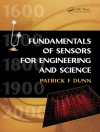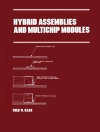‘Next-Level VR Hardware’ offers a comprehensive exploration of modern virtual reality system components, focusing on the intricate technological ecosystem that creates immersive digital experiences. The book systematically breaks down three fundamental elements of VR hardware: display systems, motion tracking technology, and haptic feedback mechanisms, examining how these components work together to create convincing virtual environments.
Beginning with a historical perspective from the 1960s, the text progresses through three main sections that detail the technical specifications and engineering principles behind each core component. The display technology section covers crucial aspects like optics and refresh rates, while the spatial tracking portion examines sensor fusion and latency optimization. The final section delves into input devices and haptic systems, exploring tactile simulation and force feedback implementation.
What sets this book apart is its system-level approach, examining not just individual components but their complex interactions and integration challenges. Using real-world examples, technical diagrams, and performance data from industry leaders, it serves as both a reference guide and practical manual for hardware engineers and VR system designers. The material maintains technical accuracy while remaining accessible, supported by peer-reviewed research and industry white papers that provide concrete metrics for evaluation and implementation.












